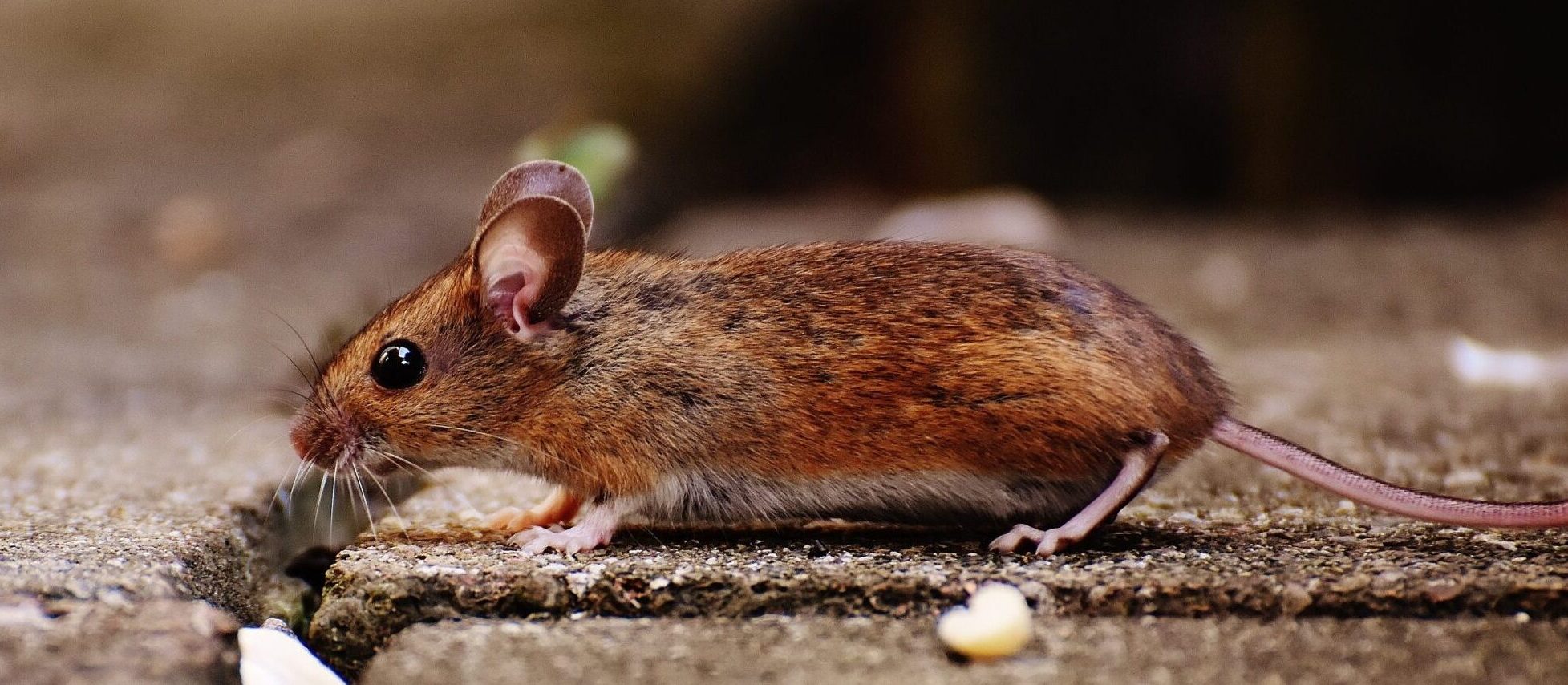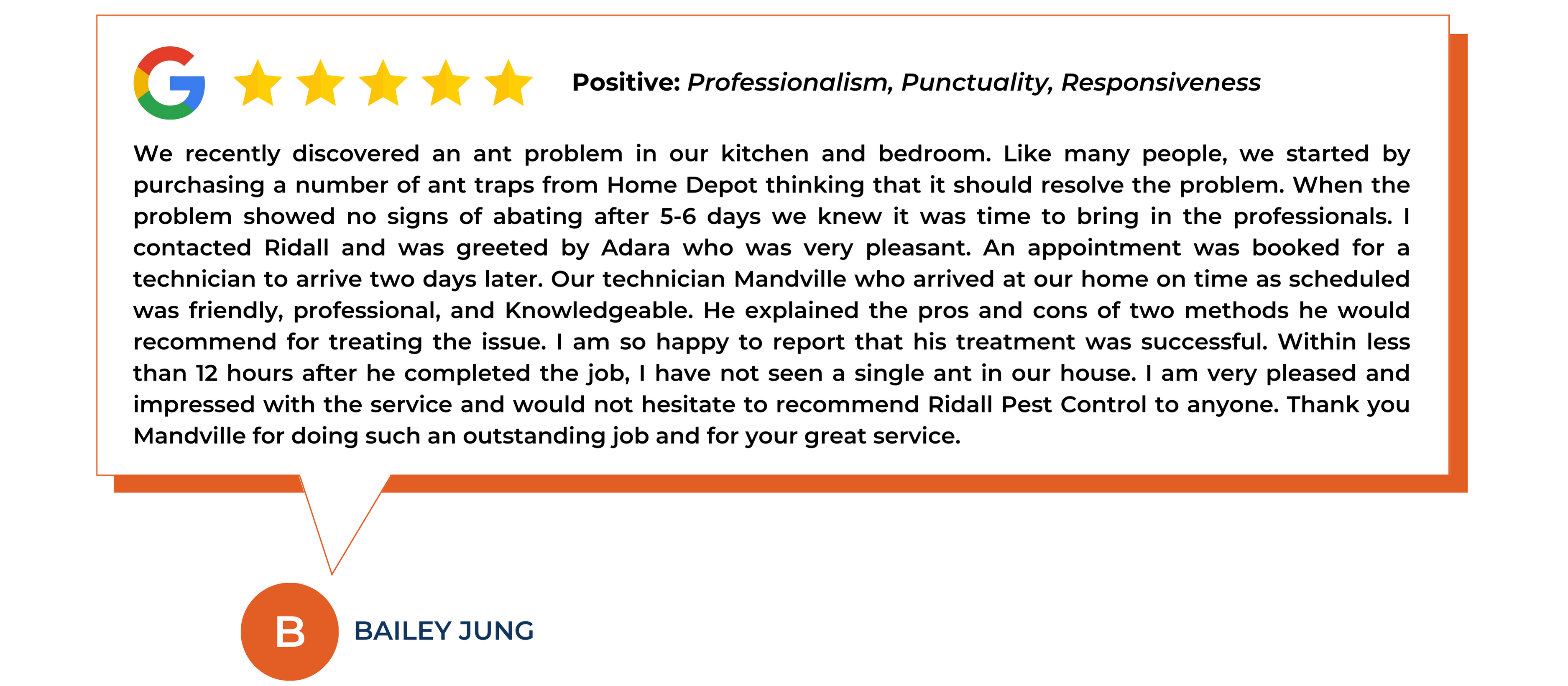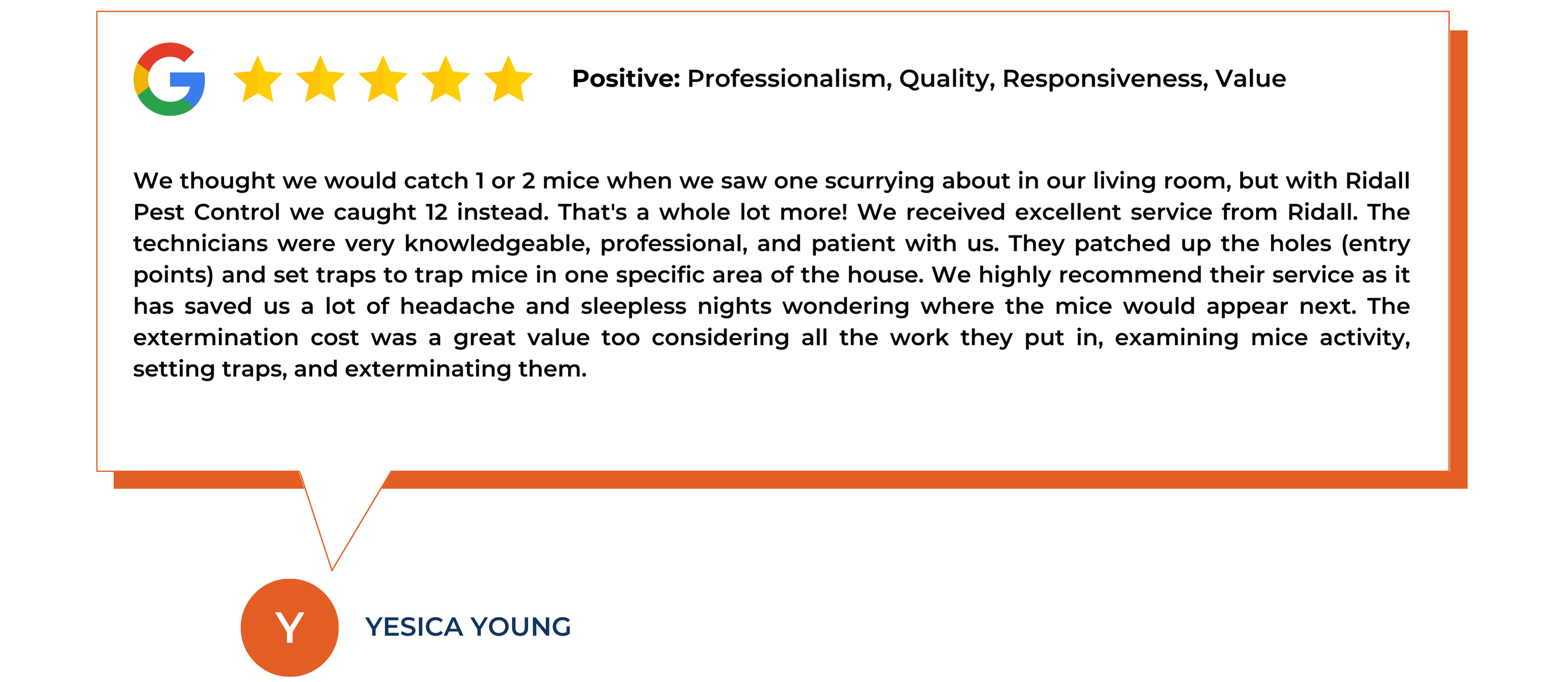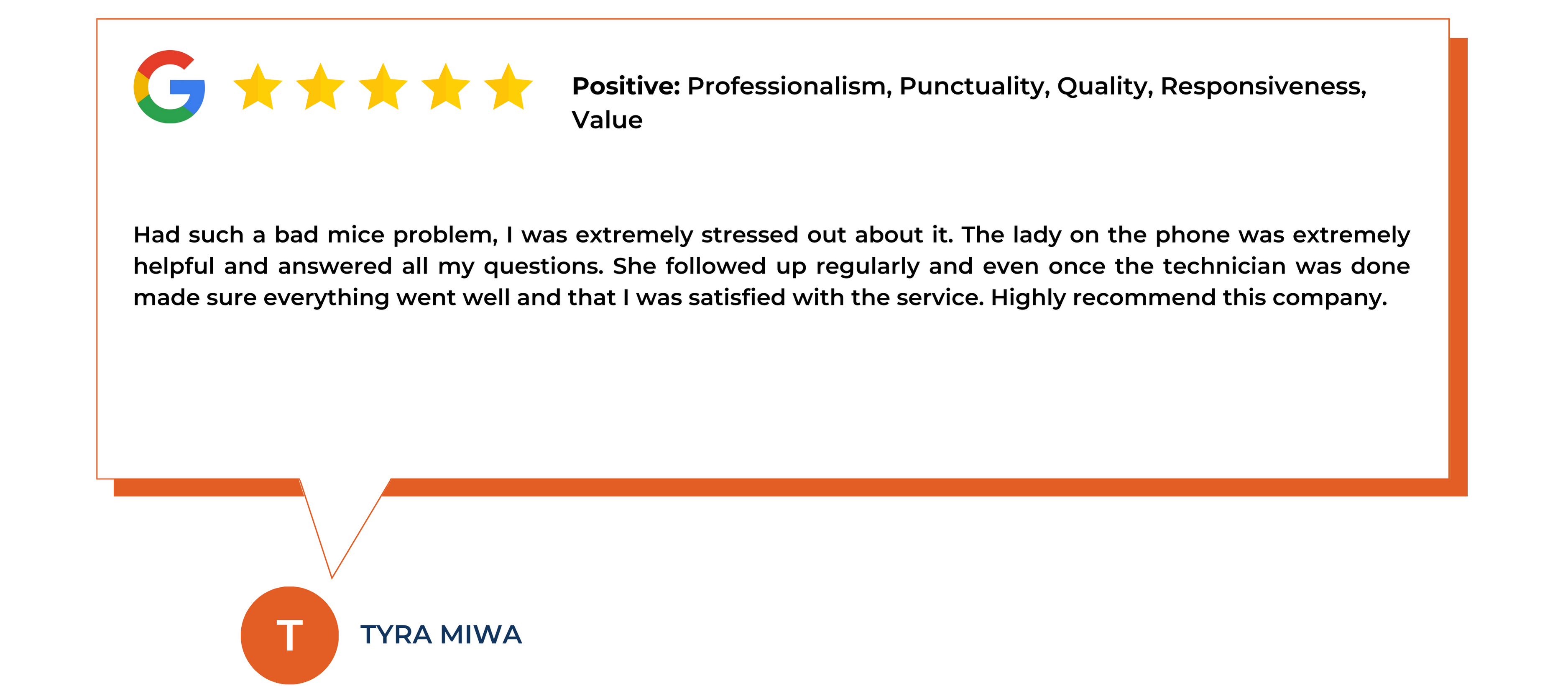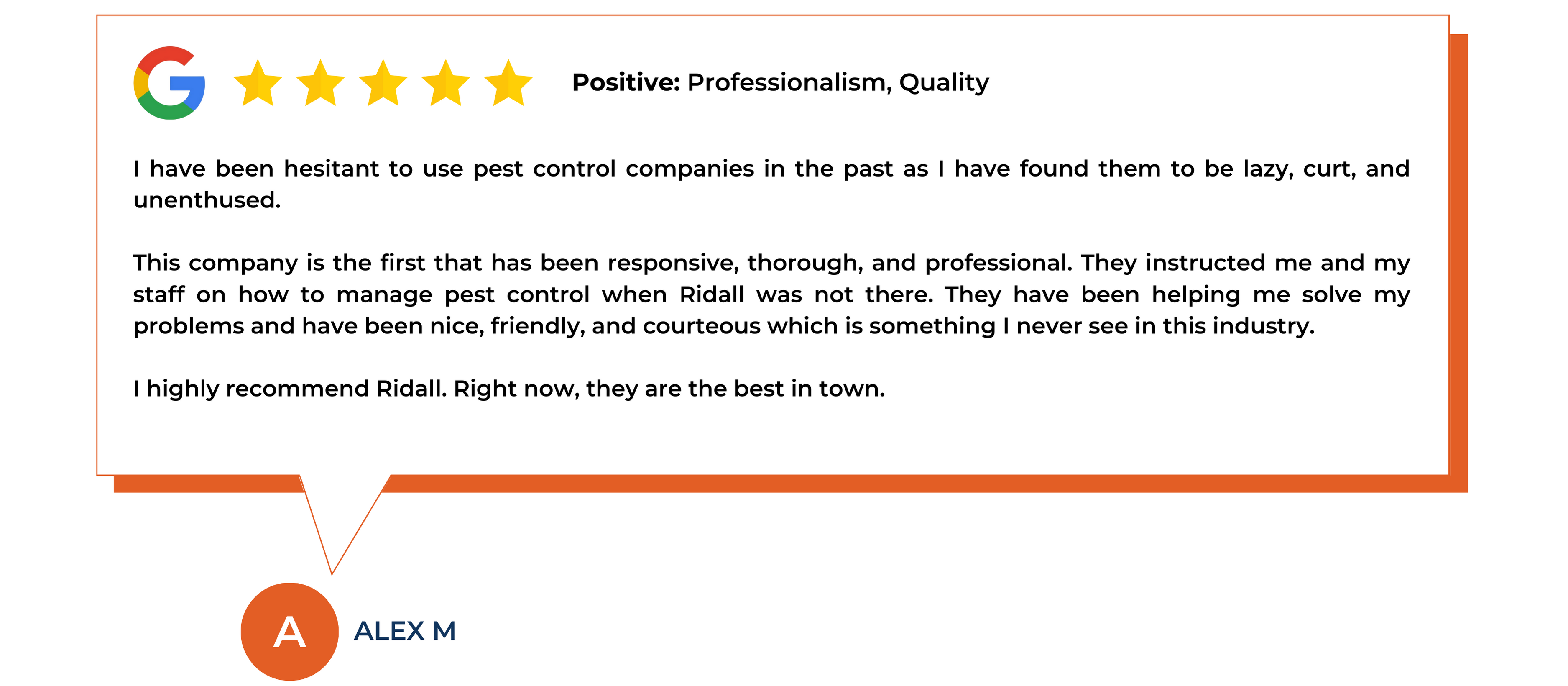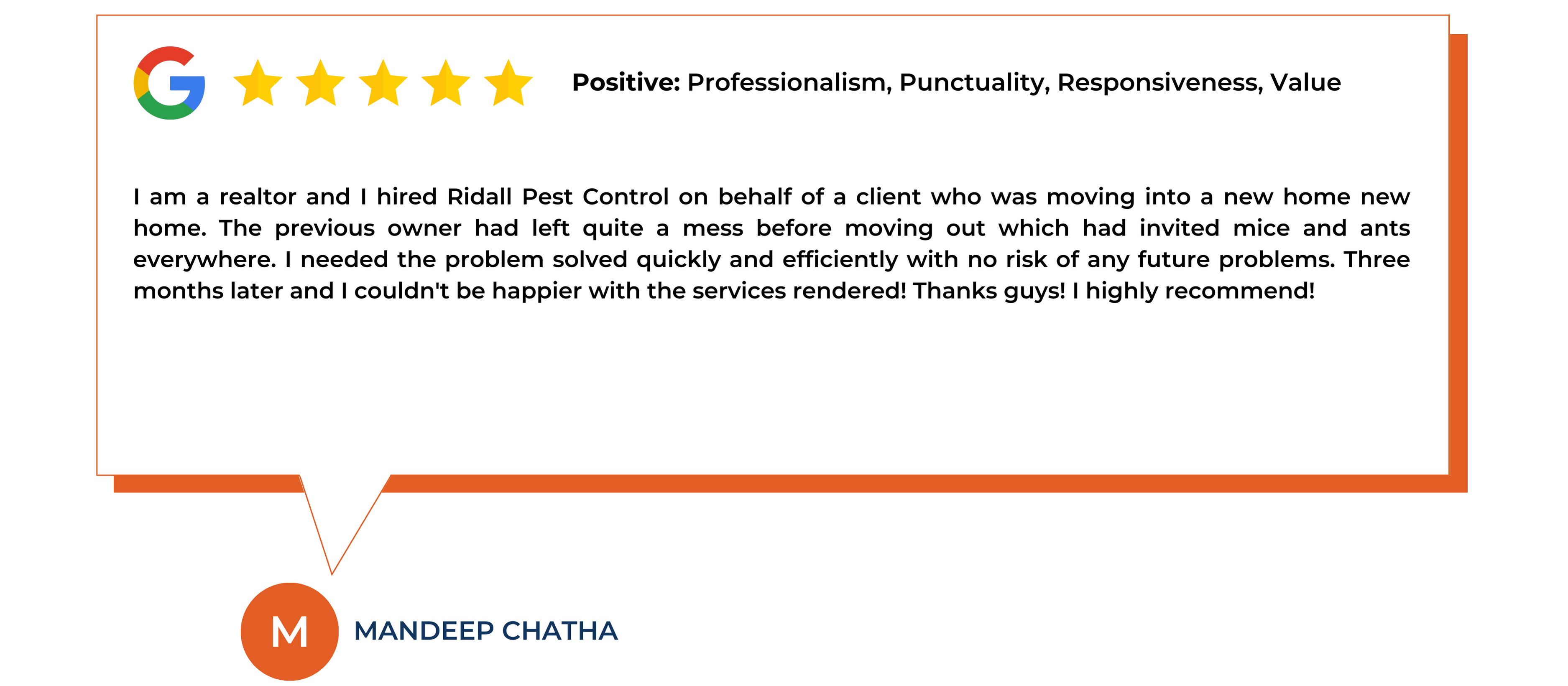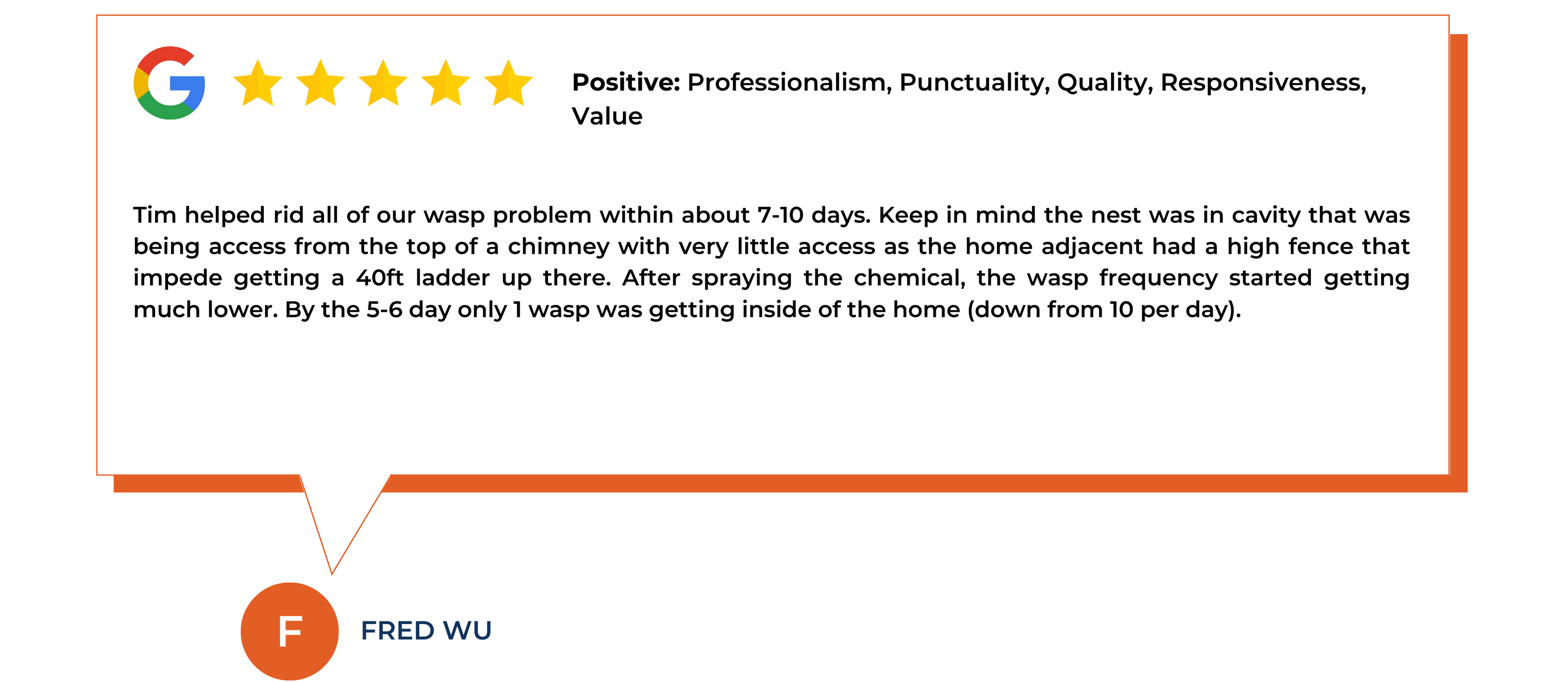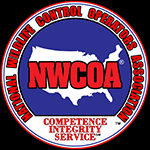From Mouse In The House To Peace Of Mind: Professional Mice Exterminators Services And Mice Control Solutions
Mice are typical household pests that, if not eradicated, can lead to various problems. A mouse infestation may be both unpleasant and even dangerous, poisoning food and causing property damage. This article will look at everything from mouse characteristics, health risks, and property damage if there is a mouse in the house, to signs of a mouse infestation and the processes in our effective mice control strategy.
Whenever it comes to mice control, prevention is key. Understanding the signs of a mouse infestation, the risks associated with it, and the available mice control options can assist you in dealing with this issue effectively. We recommend calling a Ridall Pest Control company with experienced mice exterminators to handle the problem as soon as possible.
We work daily from 8 am to 8 pm, with 24/7 website support.
Our services include same-day emergency response, professional equipment, effective pest removal strategies, and a strong commitment to the environment with eco-friendly practices prioritization.
Our technical team is all certified with structural IPM (Integrated Pest Management) certificates, Quality Pro Canada and WHMIS.
Mouse Characteristics
1. Physical Characteristics
Mice are small, slender creatures with a pointed nose and round ears. They are generally light brown or grey, though some species’ coat patterns may vary. Mice have a long, hairless tail that helps them balance and move around.
2. Habitat
Mice are adaptable and may live in a variety of environments. They are frequently found in cities, looking for safety and food in buildings, basements, attics, and crawl spaces. They can also live in open places such as gardens, fields, and woodland regions.
3. Reproduction
Female mice can have litters every 19 to 21 days, making them prolific breeders. A single mother mouse can have up to ten pups per litter. If left unchecked, this quick reproductive cycle permits mouse populations to increase enormously.
4. Nocturnal Behavior
Mice are nocturnal, which means they are most active at night. This behaviour lets them evade detection while searching for food and water sources. Scratching noises or the sound of tiny footsteps are common during their nocturnal activity.
5. Diet
Mice are omnivores, eating a wide variety of foods. They are opportunistic feeders, surviving on a variety of foods such as grains, fruits, seeds, insects, and even small animals. Mice are notorious for contaminating food stores by nibbling on the packaging and leaving droppings and urine behind.
6. Navigational Abilities
Mice have great hearing, smell, and touch skills, which help them find food and avoid predators. They are excellent climbers with easy access to elevated spaces such as cabinets, shelves, and attics. Mice can also squeeze through small gaps due to their flexible bodies, which allow them to navigate tight spaces.
Common Mouse Species
Several mouse species have been observed invading residential and commercial properties in Vancouver. Among the most common are:
- House Mouse (Mus musculus): House mice are among the most widespread and prevalent mice species globally. They are also commonly found in Vancouver. House mice are small in size, with varying colours ranging from light brown to gray or black. They are well-adapted to living in close proximity to humans, making homes, buildings, farms, and fields their common habitats.
- Deer Mouse (Peromyscus maniculatus): Deer mice are another species that can be found in Vancouver. They are slightly larger than house mice, with a reddish or golden-brown upper body and a white underbelly. Deer mice are more commonly associated with rural and woodland areas but may occasionally enter buildings in search of food and shelter.

Risks And Dangers Of Mouse Infestation
Mouse infestations endanger both your health and your property. Understanding these threats can inspire you to take protective steps to mice control.
Health Risks
Mice are carriers of various diseases that can be transmitted to humans through their urine, mouse poops, or bites. Some common diseases associated with mouse infestations include:
1. Disease Transmission
Mice are proven disease carriers and the presence of mice in the house or workplace might pose major health hazards. These diseases can be transferred to people through direct contact with mice, mouse poops, urine, or saliva, or through inhalation of airborne particles contaminated with mouse poops.
2. Hantavirus
Hantavirus is a serious disease spread by contact with mouse poops, urine, or saliva. Inhaling contaminated airborne particles, such as nesting materials or disturbed mouse poops, can cause Hantavirus pulmonary syndrome (HPS). Fever, muscle pains, tiredness, and respiratory trouble are possible symptoms.
3. Salmonellosis
Mice can carry Salmonella germs in their digestive tract, contaminating food, utensils, and surfaces with which they come into touch. Salmonellosis can be contracted by consuming contaminated food or water, resulting in symptoms such as diarrhea, stomach pain, fever, and vomiting.
4. Leptospirosis
Leptospirosis is a bacterial infection that can be transmitted to people through direct contact with mouse urine, particularly if the urine comes into touch with open wounds or mucosal membranes. Fever, headache, muscle discomfort, vomiting, and, in some cases, liver and kidney damage are among the symptoms that can range from mild to severe.
5. Allergies and Asthma
Allergens are excreted by mice in their urine, mouse poops, and saliva. Exposure to certain allergens can cause allergic reactions, especially in people who already have allergies or asthma. Sneezing, itchy or watery eyes, coughing, and respiratory issues are some of the symptoms.
6. Contamination of Food and Surfaces
Mice are known for polluting food storage and kitchens. Their persistent chewing can cause food packaging to be destroyed, raising the danger of food deterioration and disease exposure. The presence of mouse poops and urine in food storage facilities can contaminate surfaces and let disease-causing bacteria proliferate.
7. Parasites and Secondary Infections
Mice can contain external parasites like fleas, ticks, and mites, which can attack humans and spread disease. Furthermore, the presence of mice in a structure might attract additional pests such as cockroaches or rats, increasing the danger of infestation and related health problems.
Property Damage
Mice have a gnawing tendency that helps them wear down their teeth and obtain access to food sources. Unfortunately, such behaviour might result in considerable property damage, such as:
1. Gnawing And Chewed Wires
Mice have a persistent urge to gnaw on objects to wear down their teeth, which are always growing. Unfortunately, this gnawing behaviour might cause substantial property damage. Mice have been known to nibble on electrical cables, providing a major fire risk. Damaged wires can cause power outages, short circuits, and even electrical fires.
2. Structural Damage
A mouse in the house can harm the structure of your home or building. They may gnaw on wooden buildings including rafters, doors, and furniture, weakening their structural integrity. Furthermore, mice can nibble through insulation, plasterboard and other construction components, creating entrance sites and jeopardizing your property’s energy efficiency.
3. Contaminated Insulation
Mice frequently use insulating materials, such as fibreglass, for nesting. To make warm and cozy nests, they tear and shred insulation. This not only affects the efficiency of the insulation, but it can also cause insulation particles to disperse throughout the house, compromising indoor air quality.
4. Contaminated Food Stores
Mice are infamous for infiltrating food storage spaces like pantries and cabinets in search of easily accessible food supplies. Mouse poops, urine, and hair can contaminate your food, rendering it unsuitable for consumption. This contamination can cause foodborne illnesses and necessitates the disposal of infected food items.
5. Damage to Personal Belongings
Mice can nibble on personal goods like clothing, upholstery, and storage items. Mice find fabrics, papers, and cardboard boxes to be particularly appealing for nesting and nest construction. This might cause irreversible harm to your items, such as stains, holes, and odours.
6. Unpleasant Odors
Mouse infestations can cause unpleasant odours in your home. Mice have a unique musky odour, and their urine and mouse poops can be rather pungent. These odours might infiltrate the affected areas, causing discomfort and making the atmosphere less pleasant.
7. Noise Disturbances
Mice are busy at night, and their actions can produce audible noises. Sounds of scratching, scurrying, and squeaking within walls, ceilings, or hidden locations can disrupt your sleep and daily activities, causing aggravation and frustration.
To avoid future mice in the house, health risks and property damage, efficient mice control methods have to be implemented quickly. Ridall Pest Control mice exterminators can provide comprehensive treatments to protect your home.
Identifying Mouse Infestation Signs
Early detection of a mouse infestation helps prevent the situation from escalating. Keep an eye out for the following signs:
- Droppings: Small mouse poops can be discovered around food sources or in nooks and crannies. They are tapered at the ends and resemble dark grains of rice.
- Gnaw marks: Mice can be identified through chewed wiring, furniture, or packaging materials.
- Nests: Mice use shredded items such as paper, fabric, or insulation to make their nests.
- Urine odour: In cramped spaces, a strong odour of mouse urine.
- Scratching noises: Noises emanate from walls, ceilings, or other hidden regions, particularly at night.
If you suspect a mouse in the house or a mouse infestation based on these signs and require mice control as soon as possible, call a professional Ridall Pest Control company right away to arrange an expert mice exterminator to examine and treat your home.

How Exactly Do We Get Rid Of Mice?
Ridall Pest Control company uses a variety of strategies to successfully take mice control when you have a mouse in the house or business. When dealing with a mouse infestation, our licenced mice exterminators follow the step-by-step process:
It’s vital to remember that the particular steps and tactics utilized may differ based on the level of the mouse infestation, the practices of the Ridall Pest Control company, and local restrictions. Hiring a professional Ridall Pest Control service and their licenced mice exterminators assures that the elimination process is done safely, effectively, and environmentally friendly.
Facts About Mice
Mice, due to their capacity to adapt to new habitats and food sources, are highly adaptable and may flourish in a wide range of situations, from metropolitan areas to remote wilderness.
Mice, despite their small size, are exceptional jumpers, with vertical leaps of up to 12 inches (30 cm) and horizontal leaps of up to 18 inches (45 cm). Their mobility helps them navigate and avoid predators.
Female mice reach adulthood in six weeks and produce litters of 5 to 10 pups every 19 to 21 days, demonstrating their remarkable reproductive ability. Their fast reproduction emphasizes the significance of hiring a professional Ridall Pest Control company to prevent mouse infestations.
Mice communicate through a variety of vocalizations, including ultrasonic noises that are beyond the range of human hearing. They also use body language to communicate with other mice, such as ear motions and tail positioning.
Mice have an exceptional memory, remembering spatial information such as food sources, nesting sites, and pathways. They can recall elaborating maze pathways and object positions for long periods of time, which helps them survive and navigate.
FAQ (Frequently Asked Questions)
1. Are mice dangerous to humans?
Yes, mice can pose a health danger to humans by transferring diseases such as hantavirus, salmonellosis, and leptospirosis through mouse poops, urine, and saliva. They also wreak devastation on the property by nibbling on wires, wood, and other materials.
2. How do I know if I have a mouse infestation?
Mouse poops, chew marks on food packaging or buildings, nests composed of shredded materials, greasy rub marks along walls, and the presence of a musky odour are all signs of a mouse infestation. If you notice any of these symptoms, you have to act quickly to address the mouse infestation.
3. Can I get rid of mice on my own?
Professional Ridall Pest Control company is suggested for long-term effects. Mice exterminators have the knowledge, experience, and specialized tools to safely and efficiently tackle mouse infestations.
4. How long does it take to eliminate a mouse infestation?
The time it takes to get rid of a mouse infestation depends on its intensity. Ridall Pest Control mice exterminators strive to eradicate and implement preventive measures in the shortest period of time feasible while focusing on the best potential outcome. Regular monitoring, cleanliness, and entrance point sealing are critical for long-term success.
Ready to say goodbye to mice in the house with our expert mice control services?
If you have a mouse in the house, our skilled mice exterminators will protect your home. Putting your trust in mice exterminators not only ensures a quick and efficient response to your mice problem but also prioritizes your health and safety.

